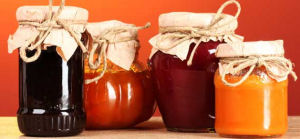By Diane Wright Hirsch, UConn Extension Educator, Food Safety
Photo: Clemson Extension
 One of the best things about June in Connecticut is strawberry season. And we have been waiting a long time for strawberry season this year in Connecticut! Most farmers will tell you that the cold spring and delayed picking as much as 2-3 weeks. Even now, the supply is still gearing up. Get to your farmers’ market early in the day if you want to score a box or two. And be sure to check with your favorite pick-your-own (PYO) operation. Some are just starting up this week.
One of the best things about June in Connecticut is strawberry season. And we have been waiting a long time for strawberry season this year in Connecticut! Most farmers will tell you that the cold spring and delayed picking as much as 2-3 weeks. Even now, the supply is still gearing up. Get to your farmers’ market early in the day if you want to score a box or two. And be sure to check with your favorite pick-your-own (PYO) operation. Some are just starting up this week.
Pick berries that are bright red and leave the overripe, mushy or those that are obviously headed in the wrong direction. If you are planning to make jam or jelly, don’t think that you can get by with shoddy, overripe berries—you might end up with shoddy, over-mushy jam. A good rule to follow when it comes to preserving food at home—whether it is canned tomatoes, frozen green beans or strawberry jam: you will never end up with a product that is of better quality than the produce (tomatoes, green beans, strawberries) that you started out with.
Refrigerate the berries as soon as you can after picking. Store unwashed berries loosely covered with plastic wrap in the coldest part of your refrigerator for two to three days at most. But, do not wash the berries before refrigerating them. If washed, the berries are more likely to get moldy in your refrigerator. Always wash them before eating, though. To wash, place berries in a colander and rinse under cold running water. Do not allow berries to soak in water—they will lose color, flavor and vitamin C.
Jam 101
If you plan to make strawberry jam, be sure you are following the most up to date guidelines. Jam is made from crushed or chopped fruits and sugar. All jellied fruit products, jams, jellies, preserves, need to have just the right combination of fruit, pectin, acid and sugar in order to actually be “jellied.”
Pectins are the substances in fruits that form a gel if they are in the right combination with acid and sugar. While all fruits contain some pectin, some have enough to form a gel on their own, while others, including strawberries, contain little pectin and the cook must use some commercial pectin in order to make a true jam or jelly. Because fully ripened fruit has less pectin, one-fourth of the fruit used in making jellies without added pectin should be underripe. That is why overripe fruit do not make good jams or jellies, they have less pectin and may result in a runny, under-gelled product.
The proper level of acidity is critical to gel formation. If there is too little acid, the gel will never set; if there is too much acid, the gel will lose liquid (weep). Again, an underripe fruit may have less acid, preventing the gel from forming. Commercial pectin products contain acids which help to ensure gelling.
Finally, there is the demon SUGAR. Sugar serves as a preserving agent, contributes flavor, and aids in gelling. Many home cooks ruin a perfectly good product when they try to cut down on the sugar in a jam recipe. Don’t do it! Too little sugar prevents gelling and may allow yeasts and molds to grow. Commercial low-sugar products are likely to use a different type of pectin (also available to the home cook) or sugar substitutes. But really, how much jam do you eat? It would be better to drink less soda, fewer candy bars, cookies or other commercially sweetened products and save your sugar calories for some home-made jams.
As a kid I remember the paraffin covered jams my mom used to make…and I also remember scraping the mold off of many of them. But, research now shows that the mold we scraped off the surface of those jams and jellies may not be as harmless as it seems. Mycotoxins (or, mold toxins) have been found in some jars of jelly having surface mold growth. Mycotoxins are known to cause cancer in animals; their effects on humans are still being researched.
Because of possible mold contamination, paraffin or wax seals are no longer recommended. It is best to fill sterile jam or jelly style canning jars, leaving 1/4-inch headspace, seal with self-sealing lids, and process 5 minutes in a boiling-water canner. This little bit of extra work (actually, I think the whole paraffin thing was messier and more time consuming) will mean less chance of having to throw out the fruits of your labor.
For more information about safe handling of fresh-picked strawberries, contact the UConn Home and Garden Education Center at 877-486-6271 or the National Center for Home Food Preservationfor canning and freezing information.